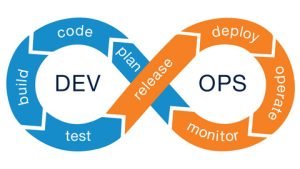Graylog is a popular open-source log management platform that enables you to collect, index, and analyze any machine logs centrally. It is designed to handle high volume log data from multiple sources and provides a web interface for searching and visualizing the log data.
Graylog is useful in a variety of scenarios, including:
- Security and compliance: Graylog can help you monitor and detect security threats, such as malicious attacks, by analyzing your log data for suspicious activity. It also helps you meet compliance requirements by providing a central place to store and track your log data.
- System and application monitoring: Graylog can help you identify and troubleshoot issues with your systems and applications by providing a comprehensive view of your log data. It can alert you when it detects errors or unusual behavior in your logs.
- Business intelligence: Graylog can help you extract valuable insights from your log data by providing advanced search and analysis capabilities. This can help you improve your business processes and make better data-driven decisions.
Overall, Graylog is a powerful tool that can help you manage and analyze your log data effectively. It is particularly useful for organizations that generate a large volume of log data and need a central platform to store and analyze it.
Graylog also includes a number of advanced features, such as:
- Alerting: Graylog can send alerts when it detects specific patterns or thresholds in your log data, such as errors or unusual behavior.
- Streams: Graylog allows you to create streams of log data based on specific criteria, such as the source of the log data or the content of the logs. This can help you filter and focus on the log data that is most relevant to you.
- Pipeline rules: Graylog provides a pipeline processing engine that allows you to apply rules to your log data as it is ingested into the system. This can be used to enrich your log data with additional context, or to filter out data that is not relevant.
In terms of when to use Graylog, it is generally a good choice for organizations that generate a large volume of log data and need a central platform to store and analyze it. It is particularly useful for organizations that need to monitor and detect security threats, troubleshoot issues with their systems and applications, or extract insights from their log data for business intelligence purposes.
Getting Started
Getting started with Graylog is fairly straightforward. Here’s a brief overview of the steps you’ll need to follow:
- System requirements: Graylog has the following system requirements:
- A 64-bit operating system (Linux, Windows, or MacOS)
- At least 4 GB of RAM
- At least 4 CPU cores
- At least 10 GB of free disk space
- Install Java: Graylog requires a Java Runtime Environment (JRE) to run. You can download and install the latest version of Java from the Oracle website (https://www.oracle.com/java/technologies/javase-downloads.html).
- Download and install Graylog: You can download the latest version of Graylog from the Graylog website (https://www.graylog.org/download). The installation process varies depending on your operating system, but generally involves extracting the Graylog archive and running an installation script.
- Configure Graylog: After installing Graylog, you’ll need to configure it to specify the sources of log data you want to collect and the destinations you want to send the data to. You can do this using the Graylog web interface.
- Start using Graylog: Once you have configured Graylog, you can start using it to collect, index, and analyze your log data. You can use the web interface to search and visualize the data, or you can use the Graylog API to programmatically access and manipulate the data.
Overall, getting started with Graylog is a fairly straightforward process that should only take a few minutes. If you run into any issues, you can refer to the Graylog documentation or seek help from the Graylog community.
Frequently Asked Questions
- What types of log data can Graylog collect? Graylog can collect log data from a wide variety of sources, including servers, applications, network devices, and more. It supports various log formats, such as syslog, Apache access logs, and Windows Event logs, and can also collect log data from custom sources using its API.
- Is Graylog free to use? Yes, Graylog is an open-source log management platform that is free to use. However, the company behind Graylog also offers a number of commercial products and services, such as support, training, and consulting, which are not free.
- Is Graylog scalable? Yes, Graylog is designed to handle high volume log data from multiple sources. It uses a distributed architecture that allows you to scale out the system by adding additional nodes as needed.
- Is Graylog suitable for large enterprises? Yes, Graylog is used by many large enterprises to manage and analyze their log data. It provides a range of advanced features and capabilities that make it suitable for handling the log data needs of large organizations.
- Can Graylog integrate with other tools? Yes, Graylog can integrate with a number of other tools and platforms, such as monitoring tools, incident response systems, and more. It provides a range of APIs and integration points that make it easy to connect to other systems.
In conclusion, Graylog is a powerful and feature-rich log management platform that can help organizations of all sizes collect, index, and analyze their log data effectively. It provides a user-friendly web interface for searching and visualizing the data, as well as advanced features such as alerting, stream creation, and pipeline processing.
Whether you need to monitor and detect security threats, troubleshoot issues with your systems and applications, or extract insights from your log data for business intelligence purposes, Graylog can help. Its wide range of integration points and APIs also make it easy to connect to other tools and platforms, further extending its capabilities.
Overall, if you need a central platform for managing and analyzing your log data, Graylog is definitely worth considering.











